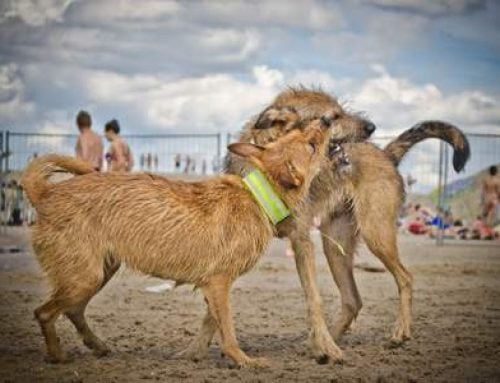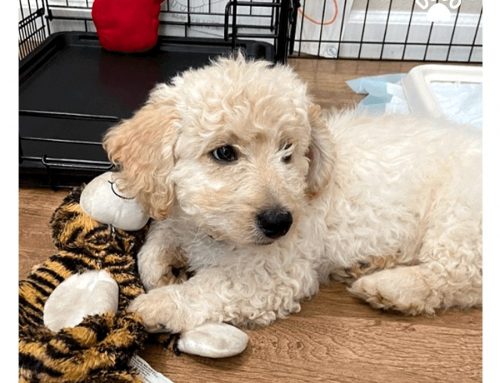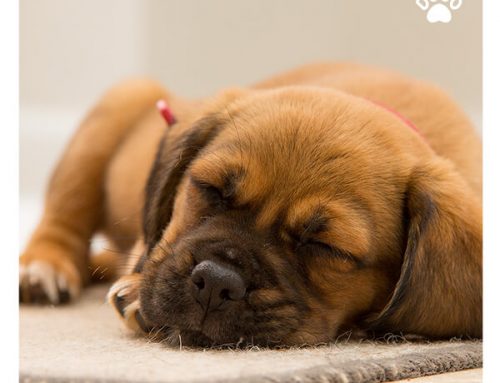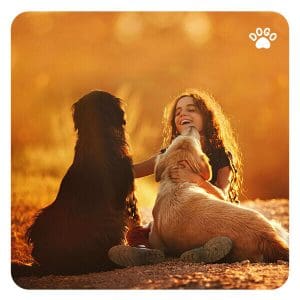
Children look, sound, and even smell different from adults. They are smaller, louder, and sometimes unpredictable. The sights and sounds of a child running around screaming, crying, or laughing can scare a puppy. If an adult dog grows up without proper socialization and exposure to children, it could lead to bigger issues and unfortunately, some cases have led to bite accidents.
For puppy owners who have children, you will need to teach them how to respect and understand the dog. Please be advised that children and dogs should never be left alone together unsupervised. You should manage and control the environment to ensure the safety of both the dog and the child and this can be taught in a fun way! Let’s dive deeper into the theme of children training dogs.
Handling
Children should be taught how to act around a dog. Teach them how to properly handle the puppy such as petting the dog in a calm and gentle manner.
Educate them that when handling a puppy, there should never be any force or pain inflicted on the dog. Have them gently touch areas such as the front and back paws, ears, eye area, back, and tail while giving a treat at the same time. This will condition the puppy to associate children as positive.
Training
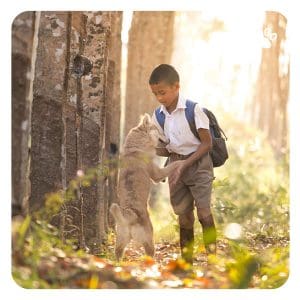
Apart from basic obedience training, it is also important to teach dogs specific behaviors that are desirable around children. For example, teaching the dog to ‘leave it’ when a toy or food is dropped accidentally by a child can prevent any potential accidents. Similarly, teaching the dog to ‘stay’ or ‘go to the mat’ when children are playing around the house can prevent the dog from getting overly excited and jumping around. In addition to training the dog, it is also important to teach children how to give commands to the dog in a clear and concise manner. This can be done by demonstrating the appropriate tone of voice and hand gestures that the dog understands.
Playtime
Keep the puppy on a leash while supervised during playtime with children. It is the best way to prevent nipping, jumping, and rambunctious play. You can also tether the puppy to a stable object so that it makes it easier for the child to get up and walk away if the puppy nips. Playtime can also be used for training time. A child can train and teach the puppy to have impulse control by asking the dog to sit and be calm before playtime can continue. If the puppy sits instead of nipping and jumping up, the child can continue the fun game of tug-of-war with toys or a toss of a ball. Again, you should keep the puppy on a long leash to use as a tool for managing unwanted behaviors.
Apart from a leash, there are other ways to keep playtime safe and enjoyable for both the puppy and children. One way is to provide interactive toys that the puppy can play with while supervised. This can include puzzle toys, chew toys, and fetch toys that can keep the puppy engaged and prevent nipping or biting. Another way is to provide a designated play area for the puppy and children that is free from any potential hazards such as sharp objects or electrical cords. This can also help the puppy associate a specific area with playtime and reduce any unwanted behaviors elsewhere in the house. Lastly, it is important to supervise playtime closely and intervene if the puppy or children show any signs of discomfort or fear. This can include redirecting the puppy’s attention to a toy or providing a calming space for the puppy to retreat to if needed.
Puppy Owners Without Children
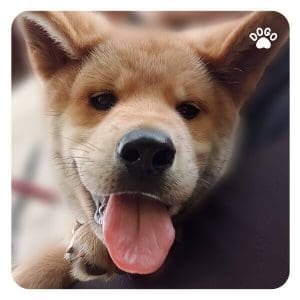
If a young puppy gets proper socialization and exposure to children, the dog will become confident around children during his or her puppy life and during adolescence. In addition, if both children and dogs are taught to respect each other, it will create a loving and fun bond for them!


